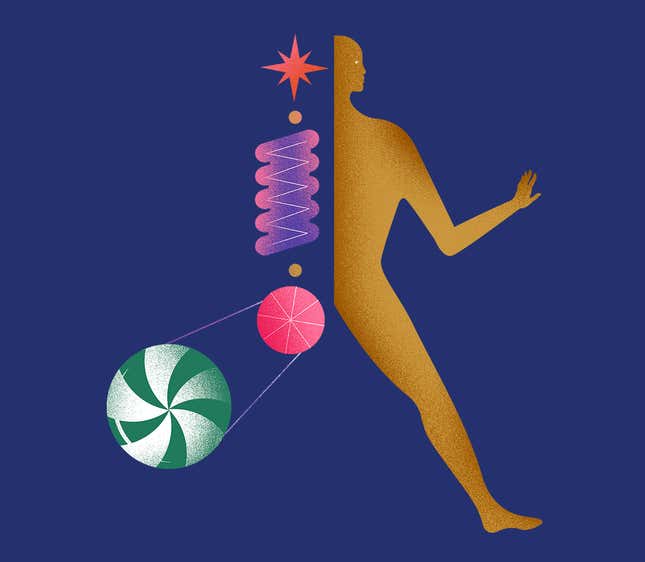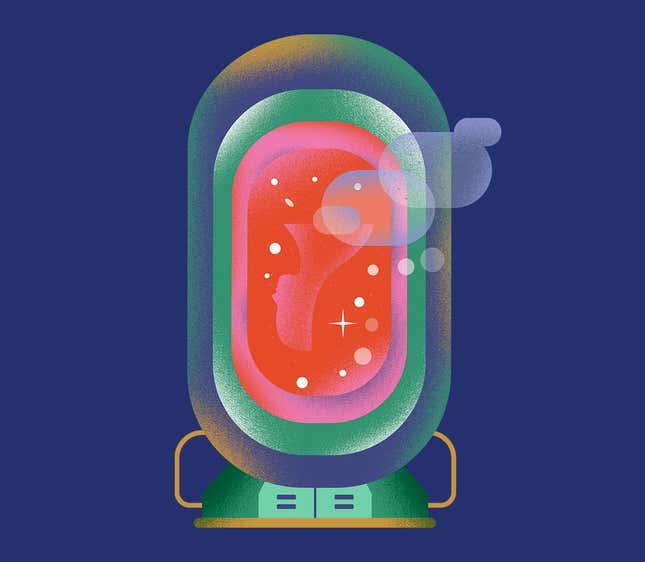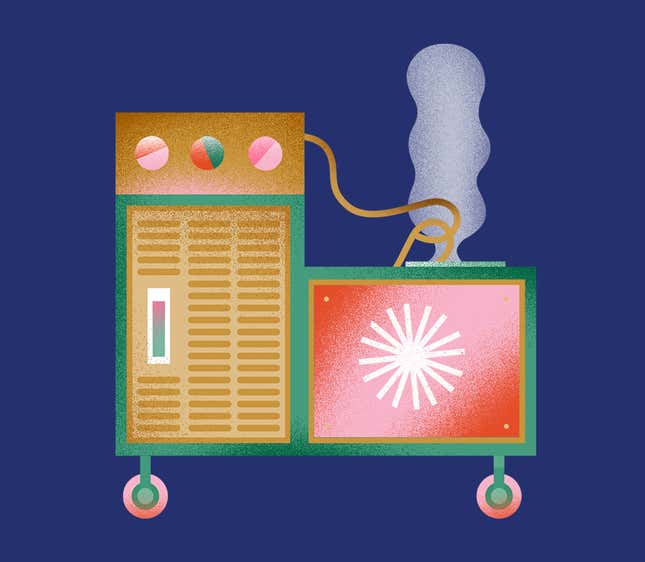In 1967, the first successful cryonic preservation was performed on a 73-year-old psychologist named James Bedford. Today, his body remains frozen at the Alcor Life Extension Foundation in Scottsdale, Arizona, which performed its 166th cryonic procedure on March 01, 2019. As of this month, over 1,200 people are set to be preserved by the world’s leading cryonic preservation company. None of them knows for sure if we’ll ever have a way to reanimate them.
Most people are aware that cryonic preservation exists—but few are aware of the details of the process. Linda Chamberlain, a co-founder of Alcor whose deceased husband, mother, and father-in-law all underwent the procedure, laid out the 12 steps of a good preservation.
Phase One: “Standby, Stabilization, and Transport”
Step 1
Alcor encourages patients who know that they’re close to death to relocate to a hospice near Alcor’s headquarters in Scottsdale, Arizona. This will allow a cryonics team to set up in the room and be ready to snap into action when the moment comes.
Step 2
No cryonics organization can start its procedure on a living person (since the process isn’t reversible, it would be considered murder). Therefore, a nurse or doctor must first pronounce the subject to be legally dead, which means that the person’s heart and lungs cease to function without intervention. At this point, the person needn’t have experienced a full brain death, i.e. complete loss of brain function.
Step 3
Once the person is pronounced dead, they’re immediately moved into an ice bath, where they’re covered with crushed ice and a mask is placed over their face. A pump in the tub sprays more ice water on the person’s face and neck, inducing hypothermia.

Step 4
The body is intubated and the lungs are restarted. A thumper is placed on the chest to restart the heart. The thumper, Chamberlain explains, “is a mechanical device that repeatedly compresses the chest and thereby mechanically restores a heartbeat. The purpose is to allow us to circulate medications during the stabilization process.” The legal death is effectively reversed, at this point.
Step 5
The team begins to administer about 10 different medications. The first is propofol, an anesthetic that’s typically used to put people to sleep before surgery. “We do not want our patient to wake up and have a very unpleasant experience of being in ice water with them just being thumped and being intubated and all that stuff … We want to make sure that they remain comfortable.” Chamberlain notes.
At this point, if the heart and lungs have been restarted, this means that the subject could be alive, but unconscious, during this part of the process.
Antibiotics, vasopressors, and anticoagulants are also injected.

Phase Two: “Cryoprotection in the Operating Room”
Step 6
Once the patient is stabilized, they’re transported to Alcor’s operating room. If the patient has gone with the “neuro” option, their head is removed at this stage. About half of Alcor’s patients opt for a head freeze. “I think that people who choose whole body, it’s an emotional decision instead of a rational decision,” Chamberlain says, “They do not feel comfortable leaving their body behind. And so they elect to go with whole body cryopreservation, even though there may be some very serious disadvantages for them.” In addition to a greater risk of tissue damage, such disadvantages would include the “reanimation” of an aged body, or one riddled with disease (who would want that?).

Step 7
Now it’s time for the patient’s blood to be “replaced” with an organ transplant solution, the same stuff used to store organs taken from a donor body. The solution is usually a combination of electrolytes (sodium, potassium, magnesium, etc.), antioxidants, and osmotic agents (which keep cells from swelling up). “The blood is no longer really helping,” explains Chamberlain. The solution “has nutrients and all kinds of wonderful things in it too that the cells need to keep metabolizing and remain alive.” This process takes between 30 to 60 minutes.

Step 8
A cryoprotective solution is then administered to help prevent the bodies tissues from “vitrifying” or solidifying into “glass-like” solids. The solution is made from a number of chemicals to protect against ice formation, and the process, called perfusion, takes from 10 to 12 hours.
Vitrification is preferred over a so-called “straight freeze” in which the body is frozen without perfusion, which can result in catastrophic tissue damage. That said, no one yet knows how to reverse vitrification—thawing the body would just turn it to mush.

Phase Three: “Long-term care at liquid nitrogen”
Step 9
The body is at last moved into an insulated capsule, called a “dewar,” which Chamberlain compares to a “very large thermos bottle.” The capsule can hold up to nine patients (a combination of heads and bodies, including pets). Full bodies are usually packed upside-down, so the head stays cooler.

Step 10
The dewar is filled with liquid nitrogen, which gets the body down to -196°C (-320°F).

Step 11
The dewars (Alcor has 25) are periodically topped off with liquid nitrogen. There is no electricity involved.
Step 12
Await reanimation.

Illustrations by Bárbara Malagoli.
Correction: An earlier version of this article noted that replacing the blood with the organ transplant solution takes 8 to 15 hours. It only takes 30 to 60 minutes. Perfusion with a cryoprotective solution occurs after this step, and takes up to 12 hours.
